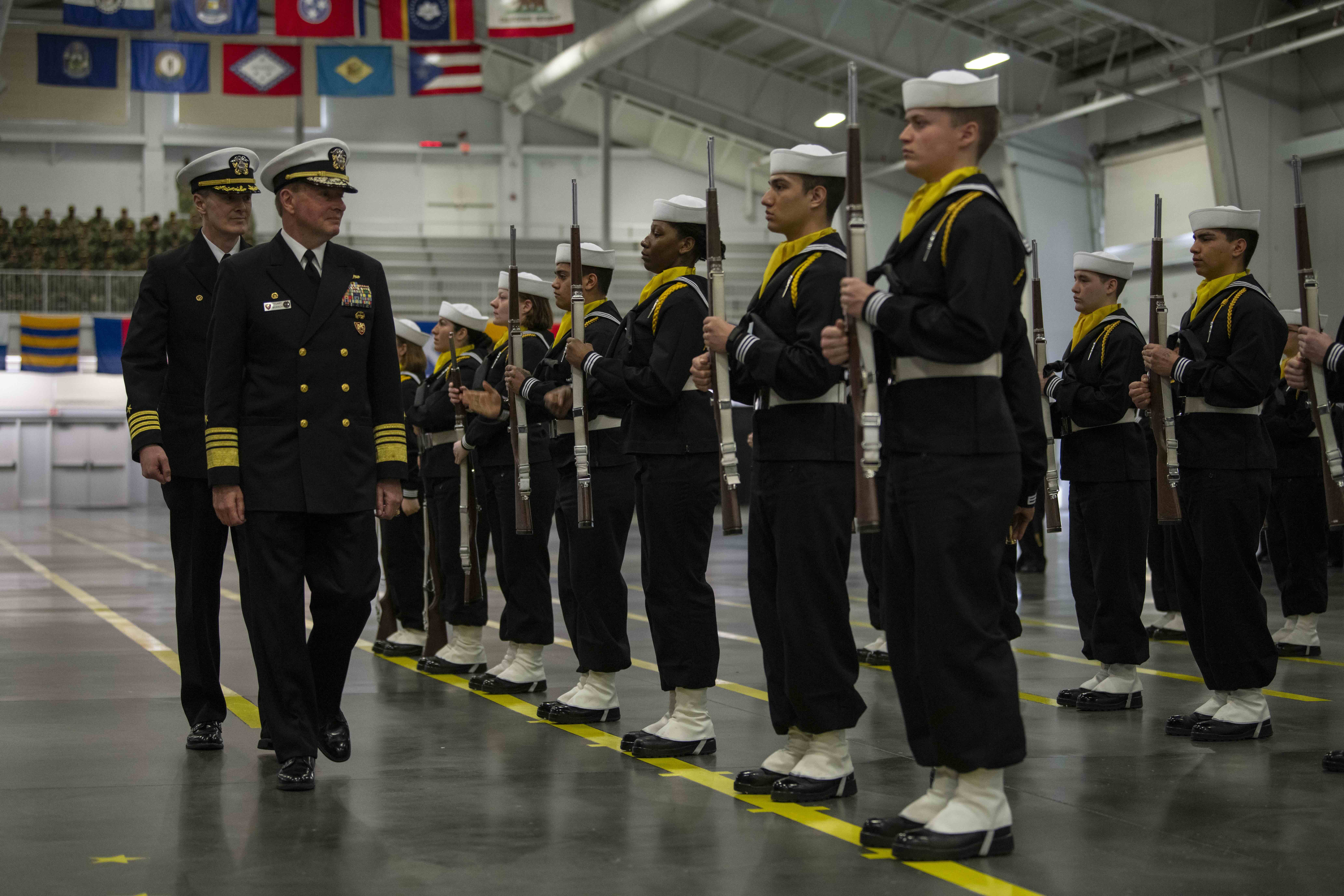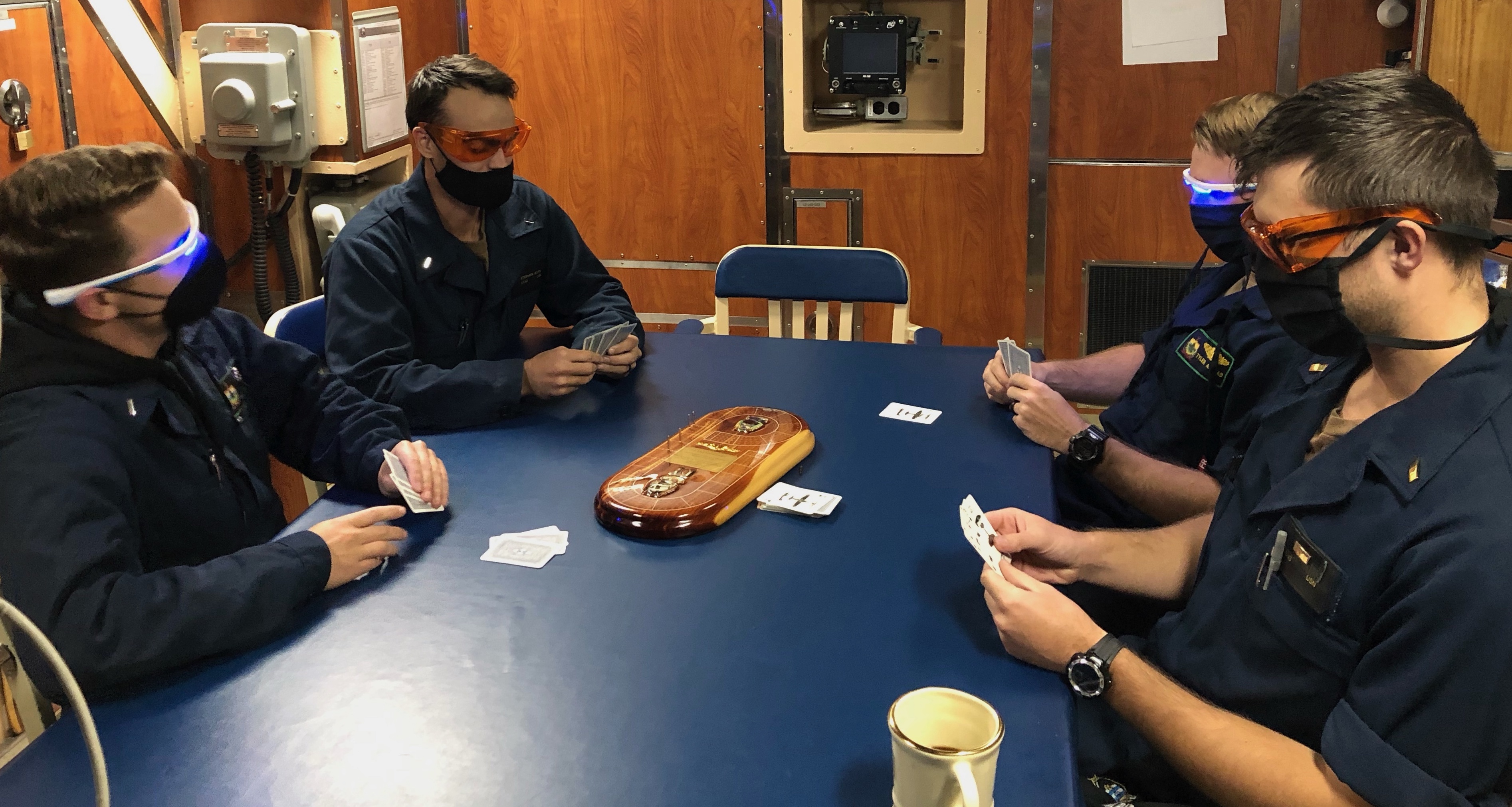
A group of Navy researchers is studying whether blue-blocking glasses or blue-emitting light might be effective countermeasures against fatigue and poor sleep that often plague submariners starved of natural light.
Submariners underway don’t get daily exposure to sunrise and sunset, and the constant exposure to artificial light can wreak havoc on their circadian rhythm, the natural, 24-hour clock that drives when one feels alert or sleepy.
“When we started looking into fatigue, we started looking at the reasons” and at any differences with fatigue reported among surface ship crews, Sarah Chabal, a research psychologist at Naval Submarine Medical Research Laboratory in Groton, Conn., told USNI News.
“One of those differences is exposure to sunlight… We know that people, in general, are impacted by sunlight exposure.”
Exposure to blue light – it’s just one of the colors in sunlight – at the correct time in line with a 24-hour timeline of day and night, is thought to help someone be alert on watches and rest during sleep periods. But deviations from that, such as exposure to light during nighttime watches or overnight work shifts, can throw off the natural cycle and lead to poor sleep, fatigue, inattention and other problems.
So NSMRL researchers wanted to see if manipulating when a sailor was exposed to blue light or protected from blue light would help them be more alert and get better sleep. So Chabal and a small research team got help from submariners on the Virginia-class attack submarine USS Vermont (SSN-792), a Groton-based attack boat, while on an underway to South America late last year.
Among the 42 officer and enlisted submariners who volunteered for the study, about half donned two sets of eyewear for part of each day: orange-tinted goggles with lenses that absorb and block the blue light from reaching their eyes –and light bulb-rimmed frames that sit at eyebrow level and produce blue light. The devices fit over someone’s prescription glasses. The other half didn’t get the personal light treatment devices, as they’re called, but joined with the others in tracking their movement, sleep and awake time using wrist-worn trackers. Surveys tracked how the 42 participants felt, their sleep quality and use of the glasses.
Light exposure “is something that we can control very easily,” Chabal said. Past research has shown that lighting on submarines “doesn’t include all of the tones and colors of lighting that you get from natural sunlight exposure” that helps maintain one’s circadian, internal clock, she said.
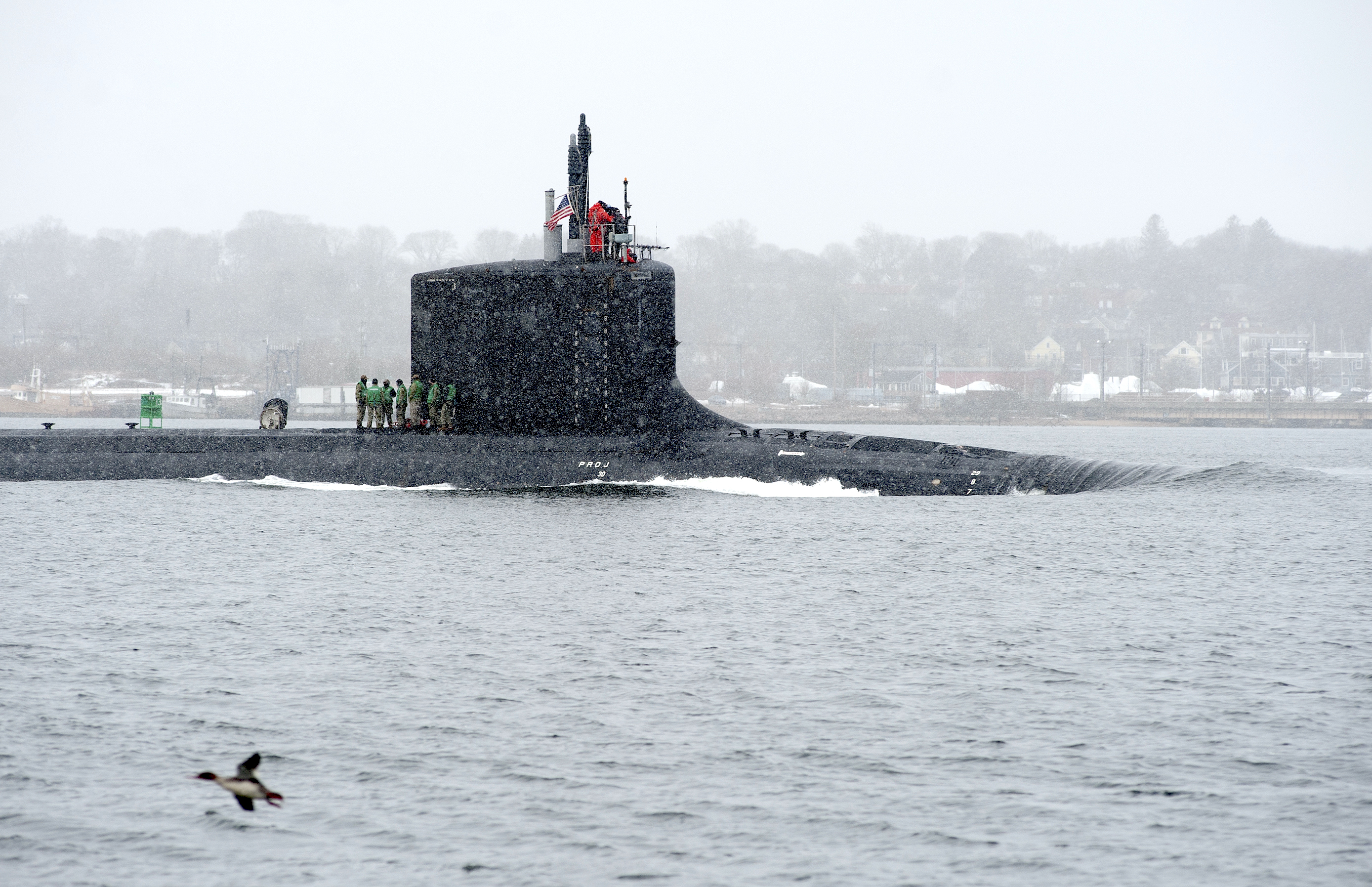
For the study, researchers wanted to expose submariners to blue light in the morning and then, in the evening hours, block their visual exposure to blue light. Blue light – that’s light at about 470 nm of wavelength, not the color itself – also comes from things like personal electronic devices, including televisions, tablets and cellphones.
The blue light-emitting frames provided something of “an artificial sun, so we’re giving them sunlight when they normally wouldn’t,” Chabal said. The blue-blocker glasses were the opposite. “We don’t want these guys who don’t have sunlight exposure going to be and looking at their screens… and dosing themselves essentially with sunlight at night before they go to bed. So we have these orange glasses that basically block the fake sun,” she said. The idea was to put them “on the same schedule” as if they were exposed like people outside to the brightness of day and darkness of night.
The research study and findings are yet finalized, officials said.
But in a “sneak peek” of the data, “we’re seeing a higher amount of sleep, so more minutes of sleep per night from the group who wore the glasses than the group that did not wear the glasses. And that’s also being reflected in their self-assessment of… how sleepy are you during the day,” Chabal, the principal investigator in the project, said in an interview. “The group who wore the glasses is reporting being less sleepy than the group who did not report wearing the glasses.”
“Those findings coupled with the fact that people were so eager to wear the glasses is very, very promising,” she said.
Lt. Cmdr. Joseph DeCicco, an undersea medical officer and head of NSMRL’s submarine medicine and survival systems department, joined the Vermont crew for several weeks to help collect data.
DeCicco, who spent nine years as a submarine officer on fast-attack boats, knows well the challenges of undersea life. Sub crews stand three-section, eight-hour watches, so at any time, one-third of the crew is living their 24-hour day at different times.
“Their sleep schedule is a little more hectic. People are awake when people are asleep,” DeCicco said.
Berthing lights are usually off, “so it’s always nighttime when you need to go in, when you’re going to go to sleep. And when you’re in crew’s mess… and in the common areas, the lights are almost always generally on, so it’s always day,” he said. “If it’s your nighttime, you may be getting the light exposure that you don’t necessarily need for that time of day, whereas if you’re on land, the sun would be setting and you’d be getting natural sleep cues.
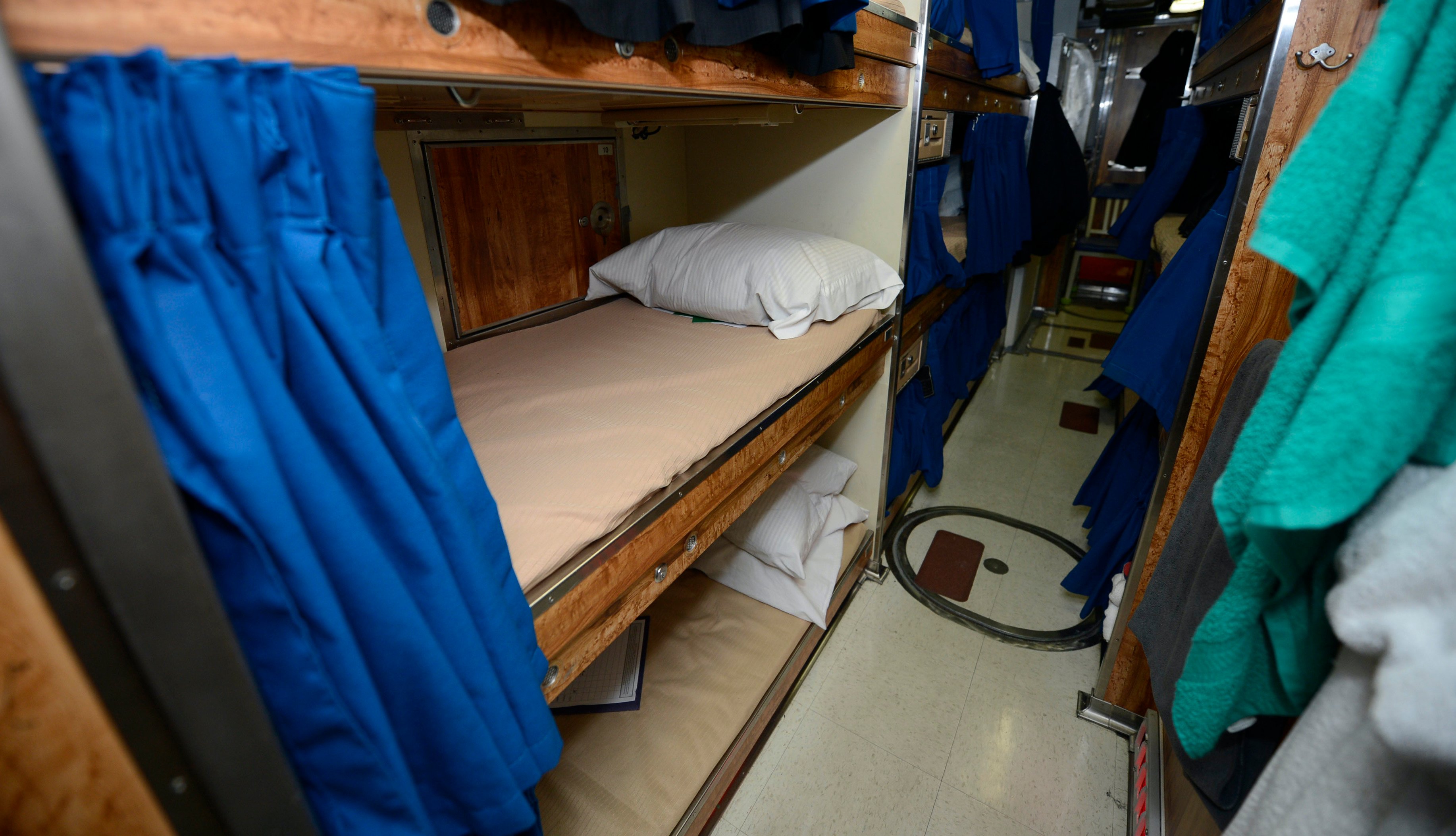
“You just can’t get that on a submarine. So we want to see if there’s a way we could essentially mimic a natural sleep cycle for people, but not necessarily the same one for everyone on the crew, because the watches have to be manned 24 hours a day.”
A previous study looked at changing ambient light on a submarine, “but it didn’t really give us the results that we wanted,” DeCicco said. “So then we looked at how can we personalize it down to the individual, instead of just generalizing it to the whole crew, and that’s what this study aims to do.”
Research trends show that blue light exposure in the morning – or at the start of a watch or comparable “morning” shift – is believed to help wake up the brain and with alertness.
For the study, submariners who got the devices wore the blue light-emitting frames in their morning and wore the blue-blocker glasses at their nighttime – all either wearing them pre-watch or post-watch. That could include during their pre-watch tour, during mealtime or relieving the watch, DeCicco said, “and they’d put their blue-light-blocking goggles on after their watch was over, after they were done with maintenance for the day, before they went to bed.”
“We wanted to be as invisible as possible to the normal day-to-day operations of the submarine,” he said.
Every participant wore a wrist tracker that collected data including movement and sleep. DeCicco, with help from the sub’s independent duty corpsman, monitored the participants throughout the underway lasting about three weeks.
They wore them as much as they could, including during their downtime, although operations or maintenance sometimes required them to remove them, he said. “It’s not a laboratory down there. They’re still operating a nuclear-powered submarine… so if they had to do something for their job, they’d do that we’d just make a note of it in the study.”
Participants came from all three watch sections and were “a nice representation of the actual crew of the submarine,” said DeCicco. They generally liked the devices, reporting “feeling more awake” with the use of blue light-emitting devices like it. Participants who wore the glasses “felt that they slept better, and I think the data will show that,” he added. While they couldn’t keep the devices, with similar ones sold commercially, several sailors asked about purchasing them on their own.
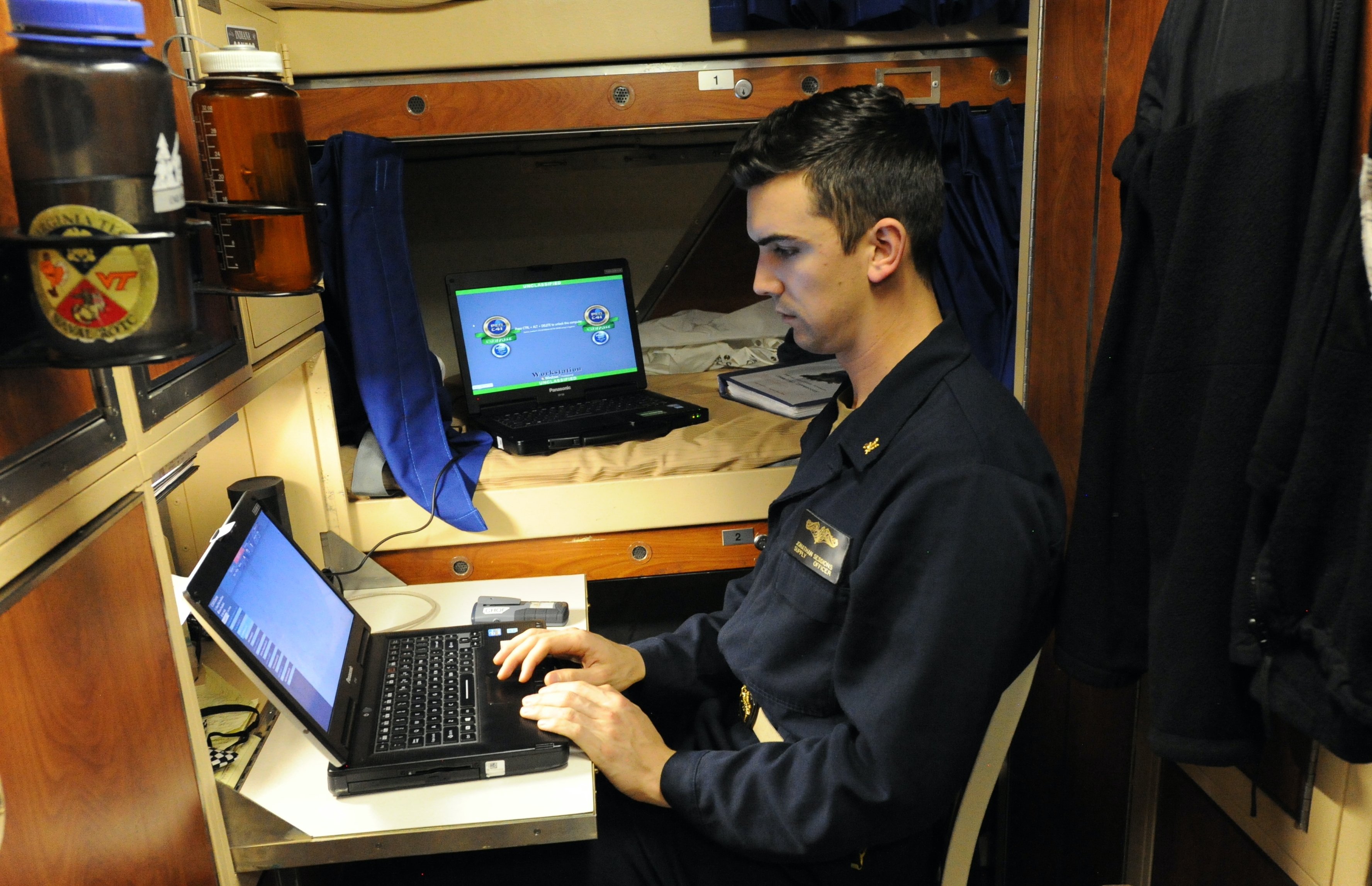
Along with the submarine force’s change in the watch rotations, instituted within the last decade, is a growing body of Navy sleep research and data collected over the past 10 years. Today’s submariners, DeCicco said, reportedly sleep “better than you would think” and close to what their other military peers and adult civilians report.
Key to that was the submarine community’s transition from an 18-hour watch standing day – with six-hour shifts and 12 hours off – to a 24-hour shift, with eight hours on and 16 hours off. “That’s a great thing that’s happened to the submarine force,” Chabal said. “Sleep is better, and we have reason to believe the circadian rhythms are better. Now we’re, sort of, going in and we are able to fine-tune.”
DeCicco loves the eight-hour section, which gives sailors better opportunity to get more sleep. The change, he said, reflected the submarine force’s growing awareness of the importance of rest and sleep. “They let us go underway in the middle of COVID to do this study,” he said. “I think that should speak volumes for how they feel and in how seriously they’re taking the health and performance of their operators underway.”




